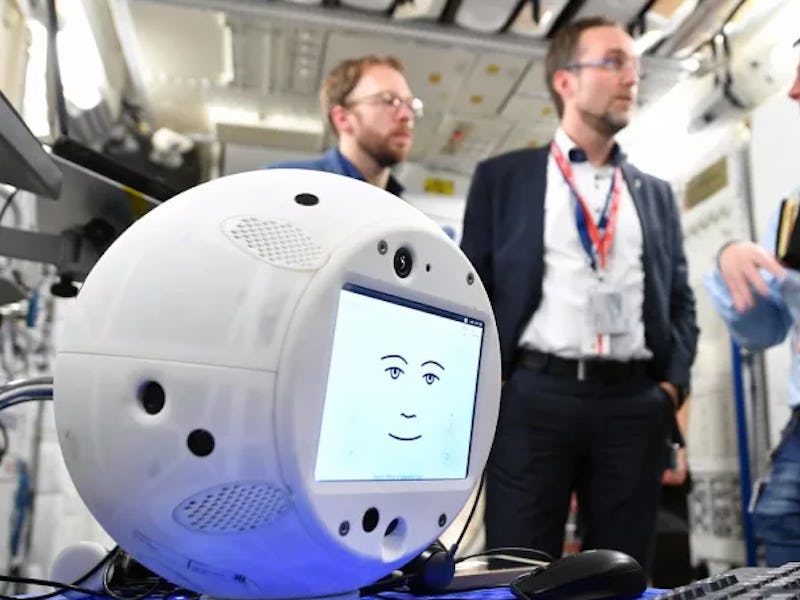The ISS's First A.I. Crew Member Understands Rocket Science and Tells Jokes
It's like "the smartest lab partner."

Say hello to CIMON, the world’s first interactive A.I. system to be launched into space to assist the crew aboard the International Space Station. This robot is very smart, sort of like if Amazon’s Alexa had gotten a Ph.D. in rocket science, but it can also tell jokes.
Short for Crew Interactive Mobile Companion, this robot was brought into existence by melding Airbus’ hardware with the software behind IBM’s Watson supercomputer.
“[CIMON is] the smartest lab partner in the world,” Bret Greenstein — IBM’s Global Vice President of Watson Internet of Things Offerings — tells Inverse. “[It] lets you take all the credit, is there for you when you need them.”
This 11-pound spherical bot was launched to the ISS inside of a SpaceX Dragon capsule aboard a flight-proven Falcon 9 rocket. The spacecraft blasted past the atmosphere at approximately 5:42 a.m Eastern Friday and is expected to arrive at the space station by Monday morning.
Upon its arrival, CIMON will begin assisting German astronaut Alexander Gerst with 100-step experiments and day-to-day maintenance before staying aboard indefinitely. The A.I. is trained using massive datasets and technical manuals which it uses to provide procedural and scientific information to crew members upon their request.
CIMON knows all, sees all.
“We’re providing [the astronauts with] something that can really understand what they’re doing,” says Greenstein. “It can deeply understand the kinds of questions they ask, the experiments they’re doing, the scientific terminology they use. It’s like a new generation of conversational interface than what anyone’s ever seen here on Earth before.”
Not only is it essentially super-intelligent, but CIMON can also express emotions with its face that looks just a bit like the Lenny Face meme. The sly A.I. even has the ability to crack jokes, but Greenstein says there won’t be much time for that far above the Earth’s surface.
Instead, CIMON will use its virtual visage to signal that it understands everything Gerst and the other astronauts will ask it.
“We’re testing a whole bunch of visual cues to see what’s effective,” explains Greenstein. “Ultimately, the astronauts are getting assistance from a partner on an experiment or a task. You have to know when you say something that it heard it, that it understood it, and then what the answer is at a glance. So these kinds of visual cues are really helpful.”
CIMON also comes retrofitted with 14 internal fans that can pull air in and push air out so it can freely move around the ISS. The system uses a built-in infrared and supersonic navigation system to create a 3D map of the space station and detect where they astronauts are floating. This way it won’t bump into anything, or anyone, important.
While CIMON’s design was molded according to Gerst’s preferences, Greenstein can’t help feeling like this is one of his childhood dreams come to life.
“Almost every geek I know was inspired by science fiction,” he says. “My whole life I’ve wanted to have a system that could listen, understand, and answer, now it’s here. For everyone else that watched those movies that’s what we all aspired to.”
This is one small step for humans, and one giant leap for A.I.